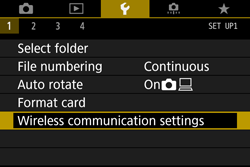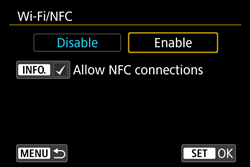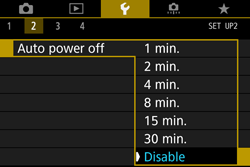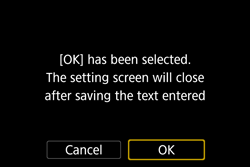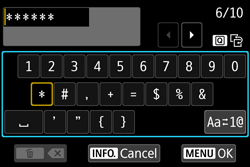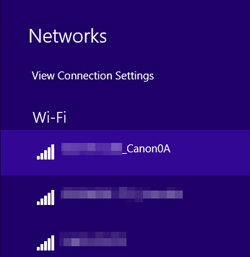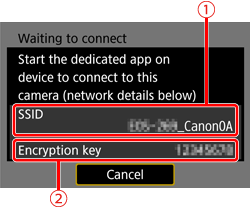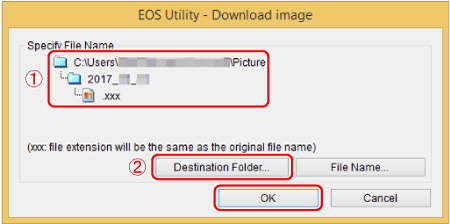Solution
Step 1. Prepare Necessary ItemsStep 2. Performing Basic Camera Settings
Step 3. Connecting the Camera to the Computer
Step 4. Sending Images to a Computer
You can save images from the camera to a computer via Wi-Fi using EOS Utility (EOS software).
This section explains how to connect the camera directly to a computer via Wi-Fi.
Caution
To connect to a computer using a Wi-Fi access point, refer to the "Related Information" section below.

Step 1. Prepare Necessary Items
1. Check the environment on your computer.
To check if your computer supports connection to a camera via Wi-Fi, refer to the "Related information" section below.
2. Make sure that EOS Utility is installed on the computer.
Caution
Settings may be disabled when an older version of software is used. Install a version of EOS Utility that is compatible with this camera.
Step 2. Performing Basic Camera Settings
The following settings must be performed before the camera’s Wi-Fi function is used.
1. Turn on the camera.
Set the camera's power switch to ⋖ON⋗.
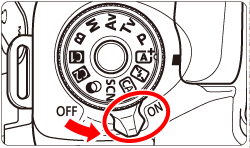
2. Press the ⋖MENU⋗ button to display the menu screen.
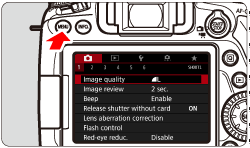
3. Use the ⋖ 





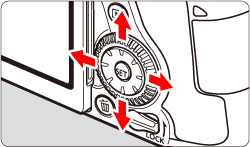
4. Select [Wi-Fi/NFC].
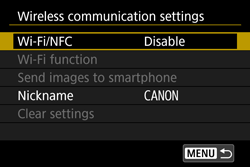
5. Select [Enable], then press ⋖ 
[Wi-Fi function] is now selectable.
Caution
Under the [ 
6. Select [Wi-Fi function], then press ⋖ 
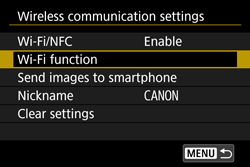
Caution
When setting up Wi-Fi for the first time, a screen to register a nickname is displayed.
When the camera is connected to another device wirelessly, the nickname will be displayed on the device. Be sure to set a nickname as otherwise you cannot set the wireless functions.
Select [OK], and then enter any characters between 1 to 10 characters in length.
Press the ⋖MENU⋗ button when finished.
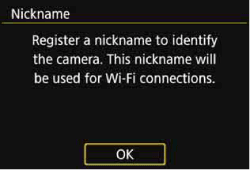
Select [OK] on the confirmation dialog, then press ⋖ 
The nickname is registered, and the [Wi-Fi function] screen will appear.
Caution
Virtual Keyboard Operation
Press the ⋖Q⋗ button to toggle between the top and bottom entry areas.
Press the multi-controller to the left or right in the top area to move the cursor.
In the bottom area, press the multi-controller to select a character, then press ⋖ 
You can check how many characters you have entered, and how many more can be entered, by referring to [*/*] on the upper right of the screen.
Select [ 

*When [Touch control: Disable] is set, you can enter all characters on one screen.
Press the ⋖ 
Press the ⋖MENU⋗ button to confirm what you have entered and exit. If a confirmation dialog is displayed, select [OK] to exit.
Press the ⋖INFO.⋗ button to cancel text entry and exit. If a confirmation dialog is displayed, select [OK] to exit.
7. The [Wi-Fi function] screen will be displayed.
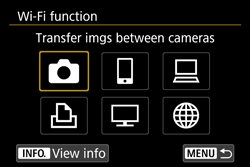
This concludes the basic camera settings.
Step 3. Connecting the Camera to the Computer
1. [ 
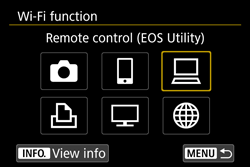
2. Select [Easy connection],[OK] and then press ⋖ 
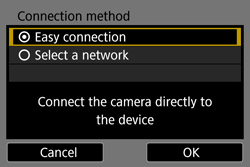
3. Operate the computer to connect it to the camera.
 ) displayed on the camera's LCD monitor.
) displayed on the camera's LCD monitor. ) displayed on the camera's LCD monitor.
) displayed on the camera's LCD monitor.Computer’s screen (sample)
Camera's screen
Caution
When connecting by selecting [Easy connection], "_Canon0A" is displayed at the end of the SSID.
4. Select [OK] and press ⋖ 
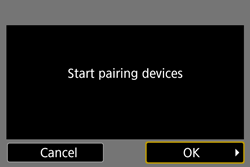
5. The following message is displayed.
"******" represents the last six digits of the MAC address of the camera to be connected.
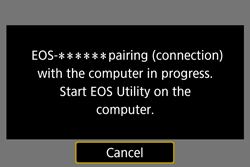
6. Start EOS Utility.
 ] on the bottom left side of the [Start] screen. On the [Apps] screen that is displayed, click [EOS Utility].
] on the bottom left side of the [Start] screen. On the [Apps] screen that is displayed, click [EOS Utility]. 7. In EOS Utility, click [Pairing over Wi-Fi/LAN].
If a firewall-related message is displayed, select [Yes].
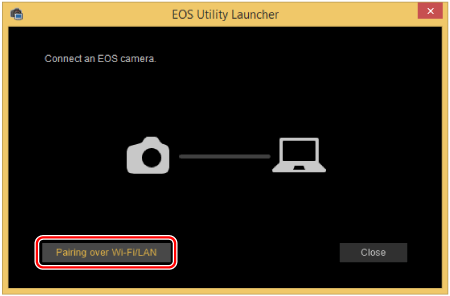
8. Select the camera to connect to and click [Connect].
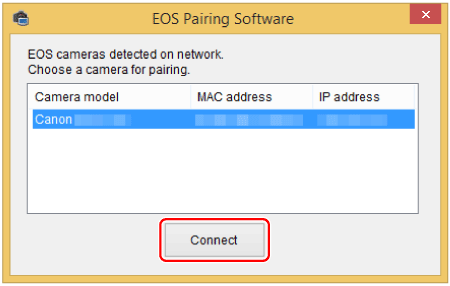
Caution
9. When the camera detects the computer on which you clicked [Connect] in step 8, the screen below is displayed.
 ⋗.
⋗.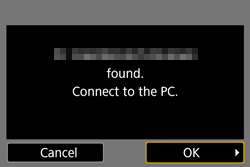
10. The [ 

Caution
 ⋗ button on the Quick Control screen ⋖
⋗ button on the Quick Control screen ⋖  ⋗ to go back to the [
⋗ to go back to the [  Wi-Fi on] screen.
Wi-Fi on] screen.Connecting the camera and the computer is now complete.
Step 4. Sending Images to a Computer
1. The main window of EOS Utility will be displayed, so click [Download Images to computer].
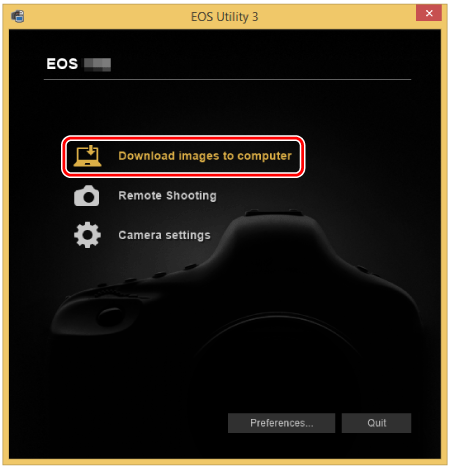
2. When the following window appears, click either ( 

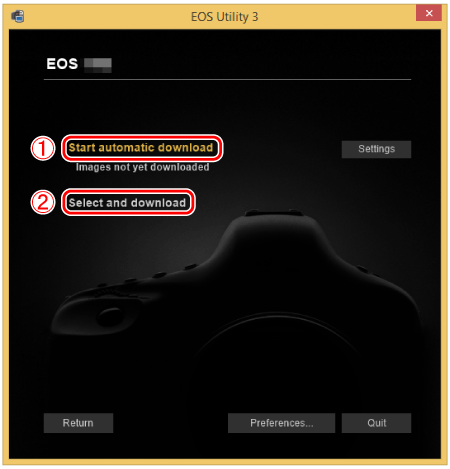
Caution
By default, the downloaded images are saved in the [Pictures] folder. You can change the save destination for images downloaded and images to download in [Preferences].
3. When [Select and download] is selected in step 2, the viewer window appears and the images in the memory card are displayed.
In the displayed list of images, checkmark the images to download and click [Download] (here, 4 images are selected).
If you selected [Start automatic download], proceed to step 5.
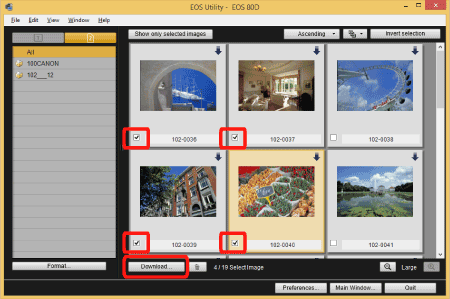
Caution
 ] to change the thumbnail order.
] to change the thumbnail order. ] icon appears on the top left of the image.
] icon appears on the top left of the image. ] in the upper right of the window to sort the images with various conditions and choose images you want to download.
] in the upper right of the window to sort the images with various conditions and choose images you want to download.4. The [Download image] dialog box appears. To change the save destination, click [Destination Folder] and in the dialog box that appears, specify the destination. Click [OK].


5. The images are downloaded to your computer.
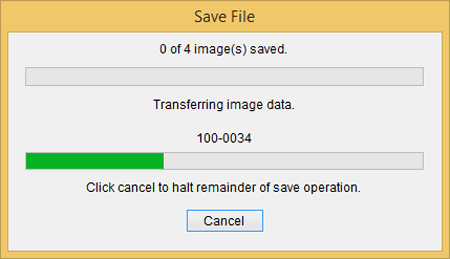
6. When all images have been downloaded, click the [Quit] button to close EOS Utility.
Downloading images is now complete.






